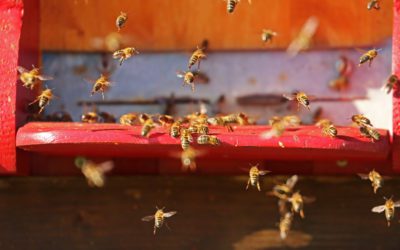Drought-Tolerant Garden : How to Create One

1. Do your research
2. Plan accordingly
3. Take baby steps
4. Be forward-thinking
You should also think about how your plants will coincide with your existing or planned landscape features. For example, if you have a swimming pool or natural pond, you’ll need to work your landscaping around them. Don’t plant a succulent right in front of the entrance to your deck if you plan to install a pool next year.
5. Prep your lawn appropriately
6. Incorporate texture
7. Choose the best possible plants
Plants that are native to arid regions will have developed their own natural protections–such as water conservation–to allow them to thrive. Succulents or cacti such as Firecracker penstemon or Texas ranger are a great choice because they are native to desert climates and thus they survive in droughts. Sure, you can plant a non-native plant, but it is likely to die quickly, or become aggressive and outcompete your native plants.
And don’t forget wildlife! Have a good idea of which plants help pollinators, and which are attractive to pests.
8. Think outside of the box- or inside of it?
9. Consider the water
Plant a garden that is appropriate in size, relevant to your household and the time you can commit to it. Try to water at night to reduce evaporation and wind interference. Avoid heavy pruning and over-fertilization. Be aware of critical periods in your plants’ development that the will require additional watering, such as during transplanting and flowering. Use mulch and compost whenever possible, and consider installing a water-efficient drip irrigation system.
Remember that a drought tolerant garden isn’t just about the plants that you include. A drought-tolerant garden might also include rock formations, decks, and walkways–so be creative! In a dry landscape, it may seem more difficult to create a lush, verdant lawn. However, with a little bit of imagination and some insightful planning, you’ll be able to create a relaxing oasis—even in the driest of deserts.

Students Learn About Groundwater at the Green Point Urban Park
The WWF Groundwater Awareness Campaign culminated in a celebratory field trip for 38 lucky learners to the Green Point Urban Park.
What is Bark Stripping?
Bark stripping is the illegal stripping and harvesting of the bark of a tree for individual profit. Learn more about this issue below.
World Bee Day: What’s the Big Buzz around Bees?
World Bee Day: What’s the Big Buzz around Bees?19 MAY, 2021By Reekelitsoe MolapoWorld Bee Day is the global annual celebration of bees and the role they play within our ecosystems. On December 20th 2017, The United Nations General Assembly adopted by consensus a...
Greenpop Foundation NPC is a registered non-profit organisation. Registration Number (NPO): 151-411 NPO.



